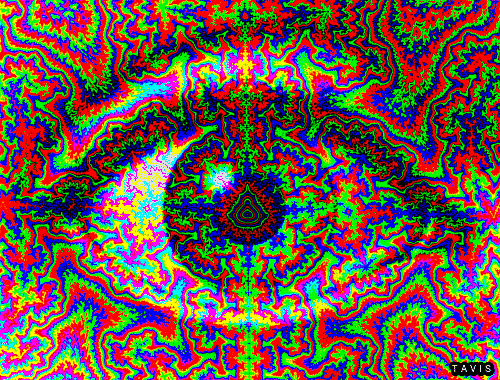another one raided from 4 chan
What is the X axis?
Artistic expression
Of what? I done get what they’re getting at. Or is it just a placeholder to make it look interesting?
When archaeology/palaeontology actually studies eras from further back, they usually have to dig deeper and deeper into the Earth. But unlike in the picture, we aren’t actually at the top of any mountain, although mountains sometimes are excellent sources for different layers, but still.
The point being hat he could also depict it as a pit, but then there’d be no negative space, he’d have to fill it with colours / or black and the infographic nature of the picture would get further diluted.
Width /s
Where do the white/black letters T K T P stand for?
They line up with the period names.
So from the bottom:
- P - Permian
- T - Triassic
- K - Kretaceous
- T - Tpaleocene
(no, I have no idea either)
K is indeed for Cretaceous (Kreide in German)
T stands for Tertiary, an old term for the PaleogeneWoah, so I accidentally got to the right answer by making a joke?
Thank you both!
We’re really speed running our mass extinction, aren’t we. Usually it takes a couple hundred million years but nah, we got this down in 50 million.
I guess it depends on what you qualify as a real mass extinction, for me its like not really. Dont get me wrong the Holocene extinction is real but we hype up our own destructive capability and we only care about our own mass extinction and the species we directly affect. From an objective perspective comparing to the other extinction events what weve done Its like a minor extinction event over a long timeframe.
I don’t consider us potentiallyoffing ourselves and only like 10k species over the lifetime of the Holocene as a mass extinction.
If you wanted an actual for realsies mass extinction level event where more than 90% of all species everywhere die in that kind small timeframe you need nothing short of an apolocyptic sized meteor or a series of eruptions from super massive volcanos.
Were not talking about the survival of taking monkeys and all the creatures were familiar with, were talking about every biome every ecosystem everywhere all at once (in a geologically short time frame) from the top of mount everest to the bottom of Marianas.
Compared to something like that tens of thousands of species we personally had a hand in wiping out since the industrial revolution or start of epocene is child’s play compared to a for-real cataclysmic natural disaster. To even try to equate what we’ve done with the holocene extintion to the Cambrian extinction or Triassic extinction is a category error, completely different levels of devistation and timeframes. Humans bad and all that sure, but its night and day. We havent blocked out the sun for like 100 years straight, covered the entire earth in ash, or raised sea level by like 5 miles.
Compared to that we’ve checks notes damaged the ozone layer (which we fixed), polluted plastic everywhere (whose processing in the food chain is probably gonna be a big part of the evolution of Organisms in the long term) and ruined our own fresh water drinking supply. Unless we decide to go thermonuclear winter thats like a minor inconvinence to the biosphere in the greater picture.
Well, the Cretaceous mased extinction was pretty much instantaneous with the asteroid impact. Even including the Deccan traps or was still only 100 000 years
Depends on how many centuries it takes us to go from our current primitive understanding of biology in the age of discovery, to biology as a completed engineering corpus. Once we have complete control over life at every level, we will spread across the galaxy within 2 galactic orbits, or around 44 million years. So from that perspective, we are on the starship already, it is only a matter of when and where we disembark.
Personally, I bet we will be able to recreate nearly all extinct life as we unravel the ways everything evolved. The mind boggling part is just how complex that task will be. Biology as something like a high level Python script, will make the present digital scope of knowledge look like protohuman education standards. Eventually you’re growing a brain with a deterministic neuron structure for digital computations and calling it your computer. That will eventually lead to all of us moving into space except for a few indigenous hold outs. Gravity prisons suck, and the resource scarcity due to gravitational differentiation does not exist in more wealthy regions of the stellar system.
The real key to getting to that future is to think and talk about it. Biology as a fully understood and mastered technology is obviously the next major age. That is the final human technology; when we finally exit the stone age of silicon.
The whole FTL issue will be a hindrance to spreading outside the solar system.
I did read an odd article a while back about how Einstein got it wrong and it is possible to exceed light speed if you keep accelerating.Not a problem at all once biology is fully understood. It only takes 22 million years for Sol to orbit the galaxy. We simply build space stations that are self sustained ecosystems. It does not matter how many generations exist before arrival at a destination. The issue is our hubris in the present and desire to be something more than we really are in the grand scheme of the universe.
Even though you are saying that it will be “mind boggling” complex, taking about a biology as a “high level Python script” does not even begin to cut it.
Why are you negative with a friendly digital neighborhood conversation? Why would you make me regret responding and posting? What makes you believe that to be okay or normal in some sane social context?
Needs more extinctions
We’re working on it!
See. The earth is flat.
What was the gigantic extinction event?
That’s intense
The scientific consensus is that the main cause of the extinction was the flood basalt volcanic eruptions that created the Siberian Traps, which released sulfur dioxide and carbon dioxide, resulting in euxinia (oxygen-starved, sulfurous oceans), elevated global temperatures, and acidified oceans. The level of atmospheric carbon dioxide rose from around 400 ppm to 2,500 ppm with approximately 3,900 to 12,000 gigatonnes of carbon being added to the ocean-atmosphere system during this period.
Several other contributing factors have been proposed, including the emission of carbon dioxide from the burning of oil and coal deposits ignited by the eruptions; emissions of methane from the gasification of methane clathrates; emissions of methane by novel methanogenic microorganisms nourished by minerals dispersed in the eruptions; longer and more intense El Niño events; and an extraterrestrial impact that created the Araguainha crater and caused seismic release of methane and the destruction of the ozone layer with increased exposure to solar radiation.
The thing that is harder to grasp is the scope and scale of the timeline. Like 252 million goes into 4.5 billion nearly 18 times. This means 252 million is recent on the total scale of time. While a similar eruption is impossible within our lifetimes, it will happen again many times in the future.
Now consider that the sun is going to run out of hydrogen in ~4.7-5b years and realize that we’re about halfway through this planet’s lifecycle.
Won’t actually run out of hydrogen. Only the accessible bit in the core. Most of the hydrogen is in the outer layers and remains untouched. Thus why red dwarfs flare like crazy but Sol, a G-type star does not. Still, we only have around a billion years at Earth’s present orbit until the sun is hot enough that the seas will evaporate. That won’t matter after we live in space stations.
I spent far too long looking for Bin Laden in this meme.
It’s making a mumbo jumbo of geochronologic units.







